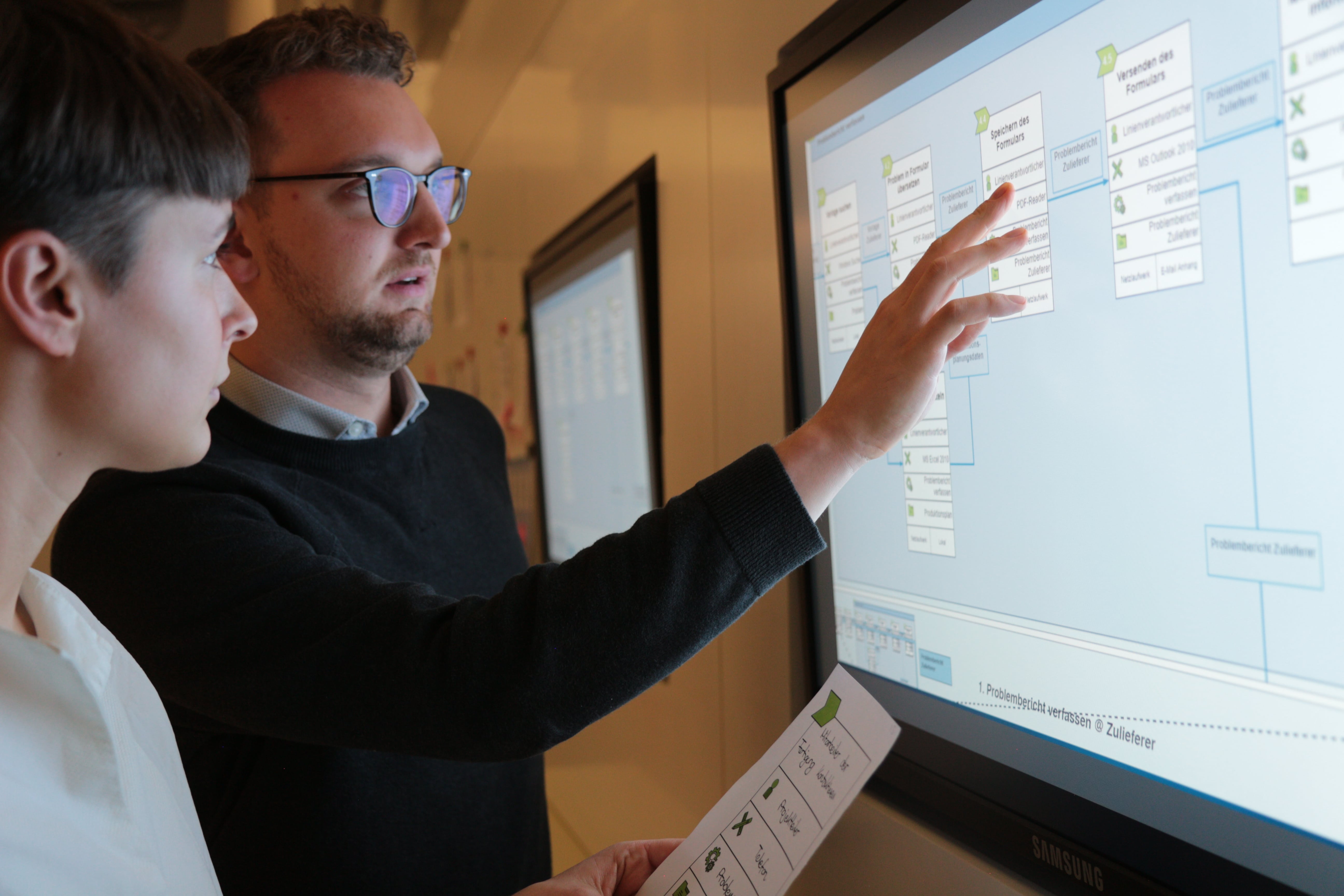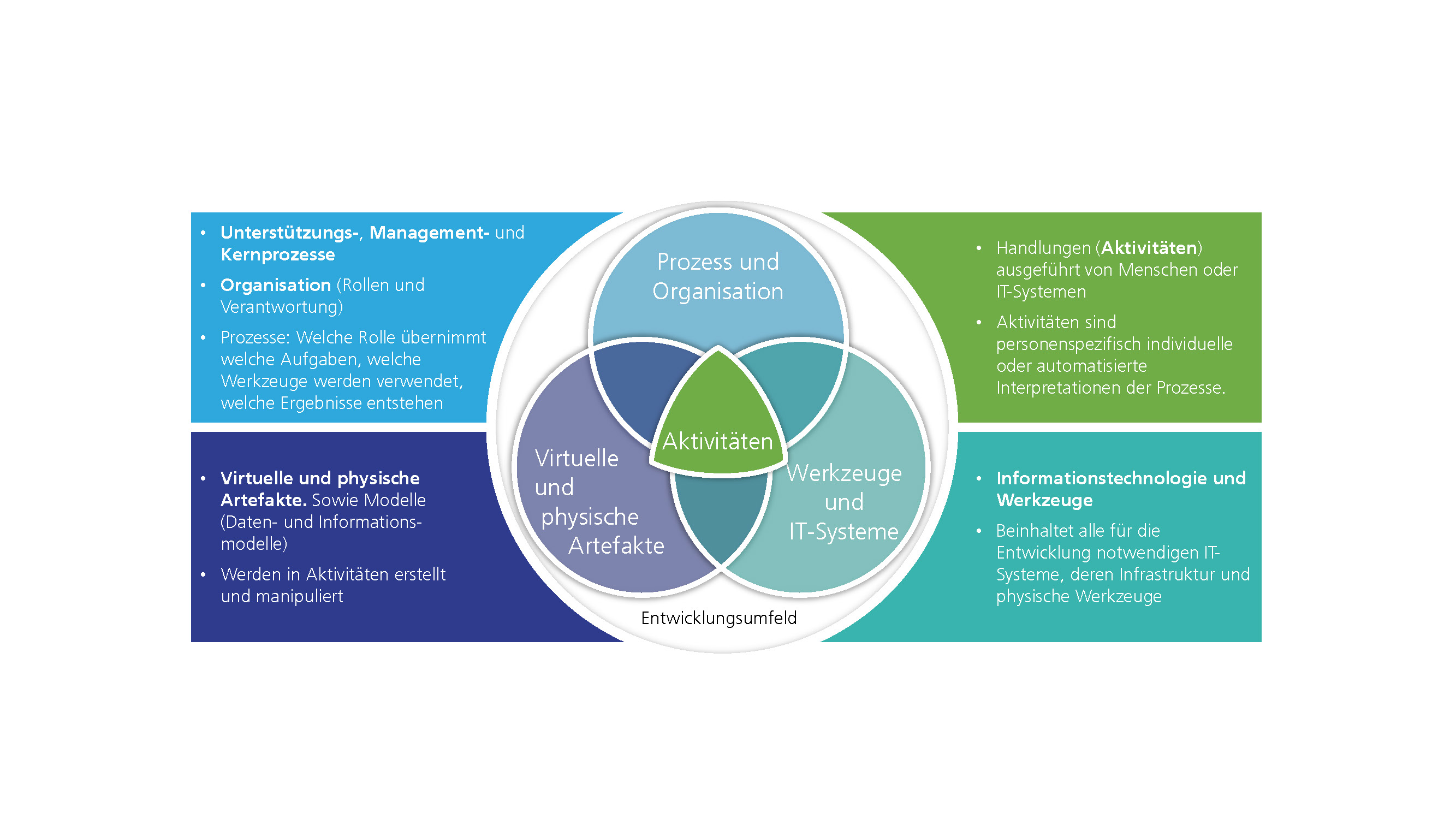To describe the development environment in product development, a model was developed and improved in our PDM|PLM Competence Center: The Engineering Operating System (EOS) describes the operating system of development.
Data flow architecture
A continuous and transparent flow of data and information is the prerequisite for the consistent implementation of digitalization projects from forward-looking areas such as Smart Services, Digital Twins or Advanced Systems Engineering. The Engineering Operating System (EOS) ensures this transparency through a clear structure and clear visualization.
Four central dimensions are mapped in the EOS:
1. The processes and company organization.
2. The available tools and IT systems. In the intersection of tools and processes, the application of IT systems is described. The following questions are answered: Which tools are to be used when in the process flow? Are the task and the capability and suitability of the tool aligned?
3. The virtual and physical artifacts, i.e. the necessary data and information models. The artifacts depicted here have an overlap with the process dimension in addition to the connection to the tools. Here, the focus is on describing the expected work results in terms of format and quality and, if applicable, their increased maturity in the context of the defined processes. These three dimensions and their interactions describe the basis of the development environment in work instructions, tools and artifacts.
The special feature of the EOS is the consideration of the fourth dimension:
4. The development activities. This central dimension at the heart of the model describes the actions actually performed by the development participants (research, calculate, construct, document, etc.). Taken as a whole, these four dimensions represent the product development that actually takes place and should be taken into account in the design.
With data flow analysis to a continuous and lean data flow

Data flow analysis is a method that can be applied in various phases of the product lifecycle, for example to accompany change projects as part of the digital transformation. In the process, a data flow architecture is created that enables a holistic view of the activities and IT systems and their interrelationships within a company. In doing so, the EOS model presented above is supplemented by the flow of data and information between activities. It is applied to analyze the current state of the way of working and to use it to identify problems and potential for improvement as well as to develop target images and target ways of working.
Especially in the context of human-machine collaboration and the automation of development activities, a digital image of activities and data flows is a useful starting point. The essential added value for companies arises during the development of the data flow architecture together with all relevant stakeholders. The value-adding activities, the executing persons, the tools used and the changed and generated models or data are taken into account. In the considered part of the product development process, these are systematically analyzed along the data flow and put into context by the data flows between the activities. In doing so, it is important to focus on the value-adding activities and to avoid non-value-adding activities. The data flow is then evaluated and optimized according to quality criteria.
 Fraunhofer Institute for Production Systems and Design Technology
Fraunhofer Institute for Production Systems and Design Technology